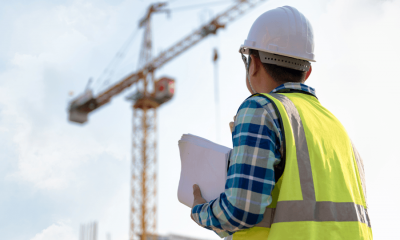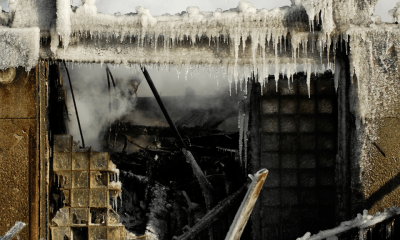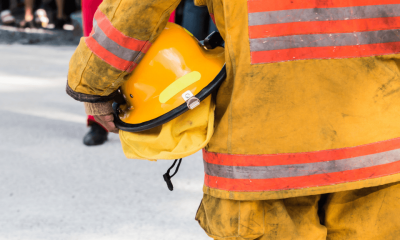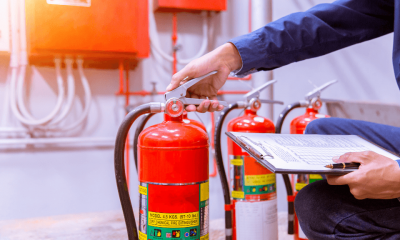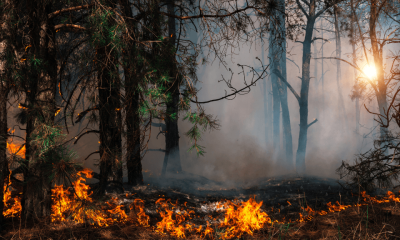4 Steps to Saving Up For a Storm - How to Prepare Financially For Rebuilding Your Home
 No one expects it to happen to them but the fact is that thousands of homes in the US are damaged and made uninhabitable each year by extreme weather events. Between 1993 and 2012, approximately six percent of all insured homeowners filed claims for total losses caused by hurricanes, tropical storms, tornadoes, winter storms, earthquakes, wind/hail/flood and wildfires, according to the Insurance Information Institute. Many of these homeowners were unprepared financially to survive the lengthy claims and repair process.
No one expects it to happen to them but the fact is that thousands of homes in the US are damaged and made uninhabitable each year by extreme weather events. Between 1993 and 2012, approximately six percent of all insured homeowners filed claims for total losses caused by hurricanes, tropical storms, tornadoes, winter storms, earthquakes, wind/hail/flood and wildfires, according to the Insurance Information Institute. Many of these homeowners were unprepared financially to survive the lengthy claims and repair process.
“In any disaster, even the most well-insured people will have cash flow needs as expenses arise in the short-term before long-term government or insurance company support kicks in,” said Stephen Surace, Vice President and Chief Financial Officer of Utica-based Adjusters International.
How much money have you set aside to rebuild your home if it is destroyed in a disaster? You may think that purchasing your insurance policy is the only action that you need to take but experts say it’s really only the first part of long preparation process. Being financially prepared may be one of the most important steps homeowners can take in protecting their most prized possession – their house.
Here are four steps to shoring up your savings against an unexpected storm:
1.) Know what your deductible is
"Although coastal properties are the most vulnerable, extreme weather can level homes at any time. Insurance deductibles for these catastrophe claims can vary widely from a flat dollar amount to a percentage of the insurance value. It’s really important for homeowners to know which types of catastrophes are most common in their communities and how much their deductible will be for that type of claim so that they can put aside enough money to cover those costs. I recommend that policyholders identify the highest deductible that they may need to pay and save at least double that amount."
- Carl Gross, Vice President and Chief Administrative Officer of Detroit-based Globe Midwest™ Adjusters International
Gross points out that the typical homeowner’s insurance policy covers damage from a wildfire, windstorms and hail but that, because flood, hurricane and earthquake damage are usually excluded under homeowners policies, separate policies must be purchased to cover those perils.
2.) Save for additional living expenses
Surace notes that homeowners often forget to plan for the cost of additional living expenses. These are the costs that you will incur as a result of living somewhere else while your home is being rebuilt or repaired. While the average person would likely receive support from an insurance company within five to seven business days, it may take longer during a widespread disaster.
"Along with your hotel bill or home rental fees, you may have to dine out with your family instead of eating in, drive further to get to work and back, and pay for temporary parking passes. Basically, you should anticipate any costs that you might have while living at a hotel and save enough to cover those costs until your insurance company sends their first payment."
And don’t forget to plan for your pets! Surace says that the costs of boarding and caring for animals can be a big expense for some homeowners. Families with pets should check in advance with local kennels or caretakers to see what they would charge for their animals’ care in the event that their home is destroyed.
3.) Be ready to replace the items you use every day
One of the toughest tasks after a home is destroyed is remembering, documenting and replacing the family’s personal property.
"People normally have no idea how much stuff they have in their homes until after it’s been destroyed and they have to start replacing it. You should try to figure out what basics you’ll have to buy such as clothing, accessories, grooming supplies, medications and any computers or other devices that your family might need for school or work. Although you will likely be reimbursed for those expenses down the road by your insurance company, it can sometimes take a while for any payments to be made. In the meantime, we’re talking about thousands of dollars in purchases that can really sting if you’re not prepared."
4.) Get estimates for rebuilding
Standard construction costs are usually fully insured minus your deductible but things that may not be covered include code upgrades for older homes, architect design work, landscaping, interior decorator and financing costs such as bank fees on homes that are still under mortgage.
"Speak to a builder that is familiar with what the current reconstruction cost would be, including code upgrades, to rebuild your home in the event of a major disaster. Note that the market value is not typically a relevant factor when it comes to arriving at the actual cost to rebuild. Also, keep in mind if you are in a wildfire area, it may not be feasible to rebuild at your current loss location. Protect yourself and ensure that your coverage will allow you to rebuild at another location or give you the latitude to buy a similar property that has already been constructed."
Licensed public adjusters can be great resources for helping you to figure out how much your family will need if your property has become uninhabitable after a disaster. The planning process can also be a great way to establish a relationship with a public adjuster before disaster strikes.
“Having a good advocate, every year, sit down with you and your agent to review the coverage, will help you to avoid being ill-prepared in the event of a major catastrophe. There are many grey areas in insurance policies but if you know the right questions to ask proactively, you can make sure that your home is well protected.”
For additional reading on this topic, visit:




